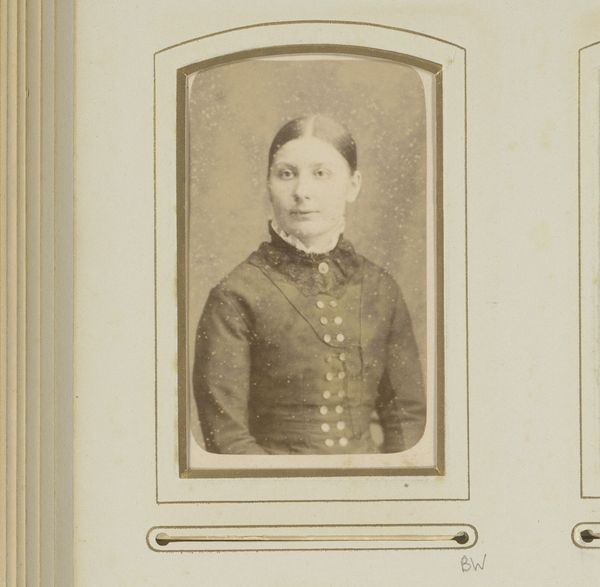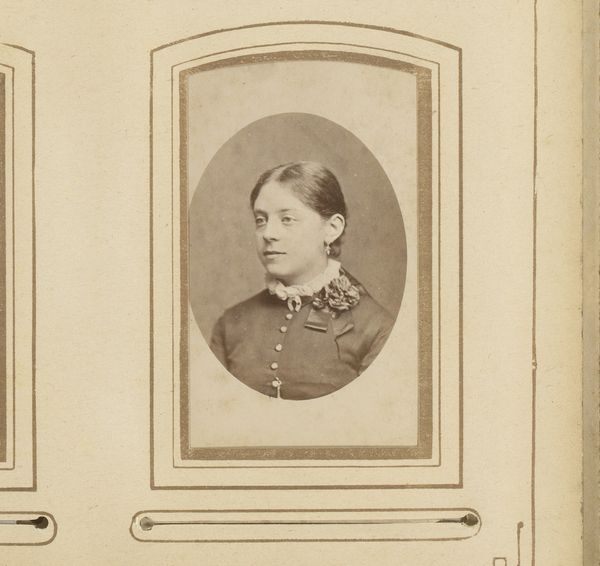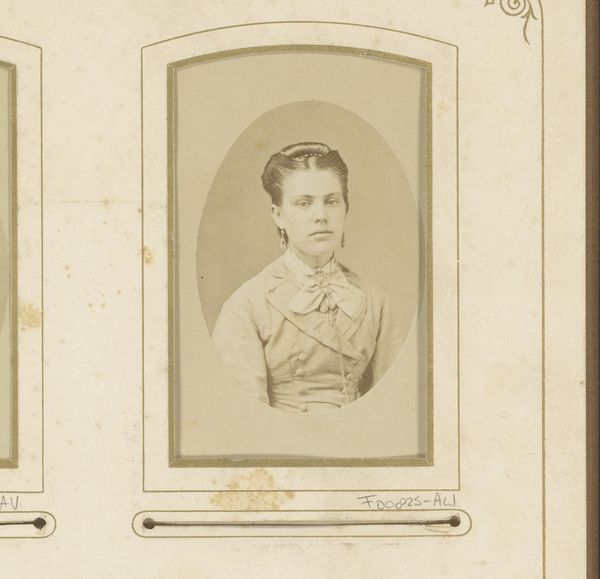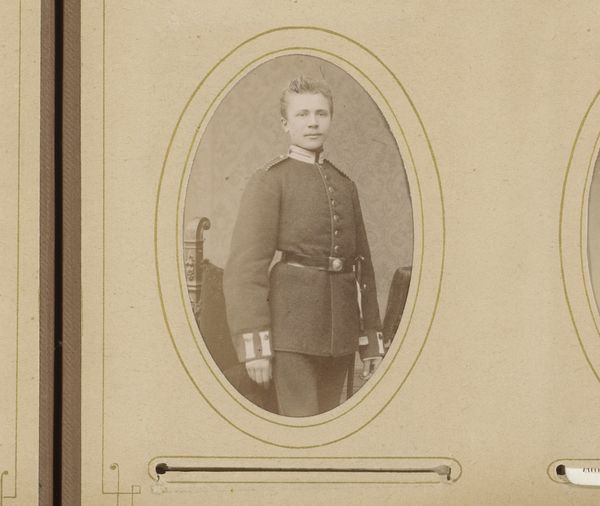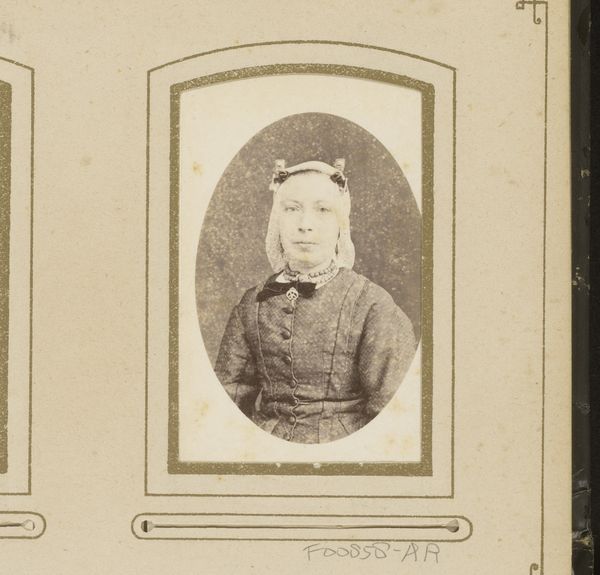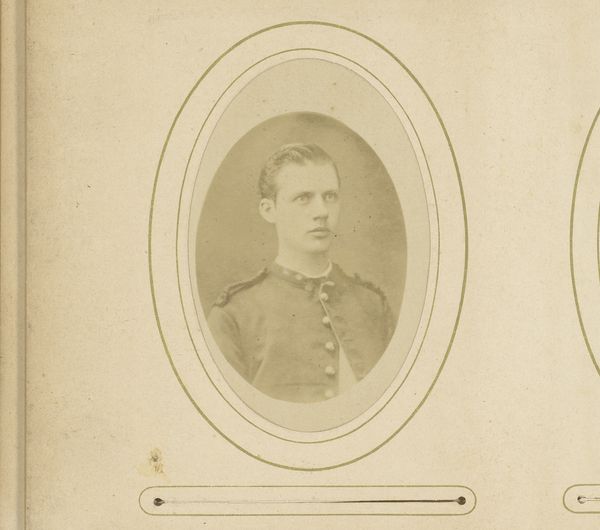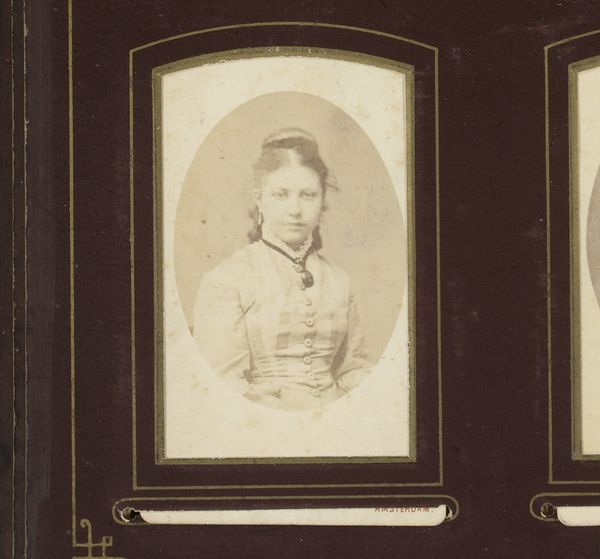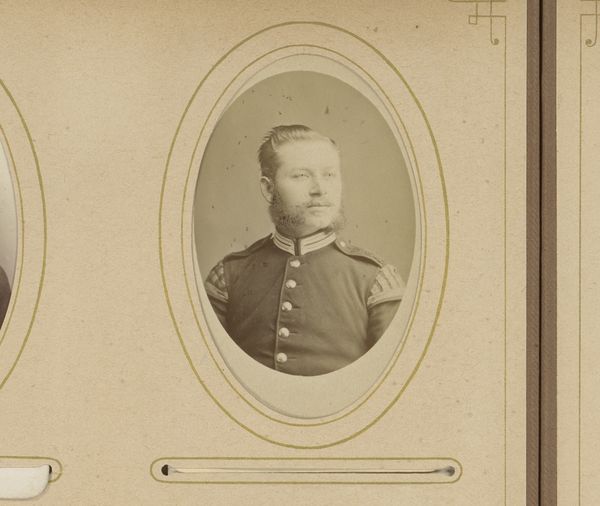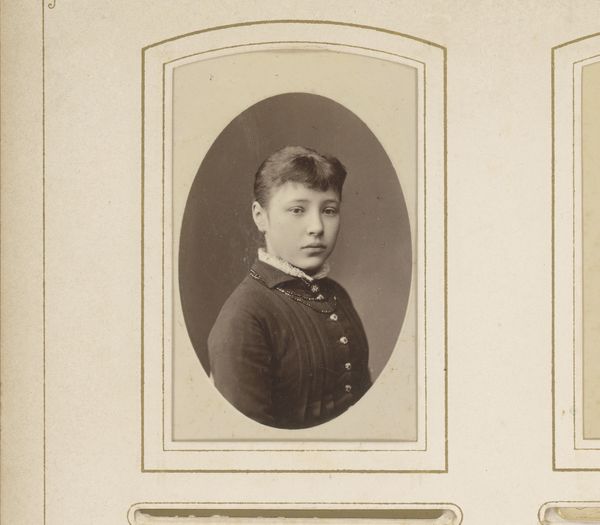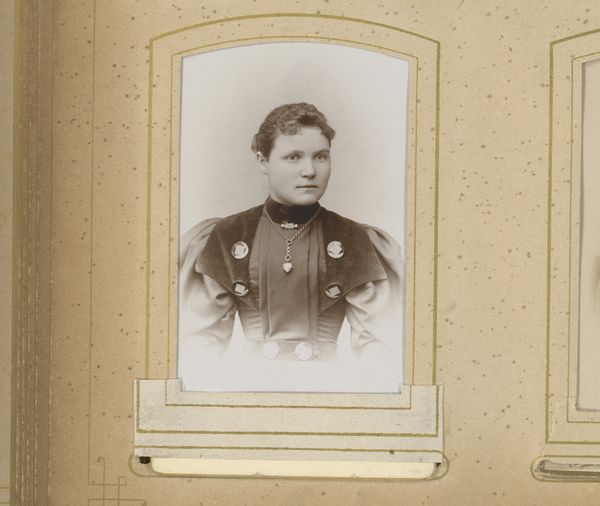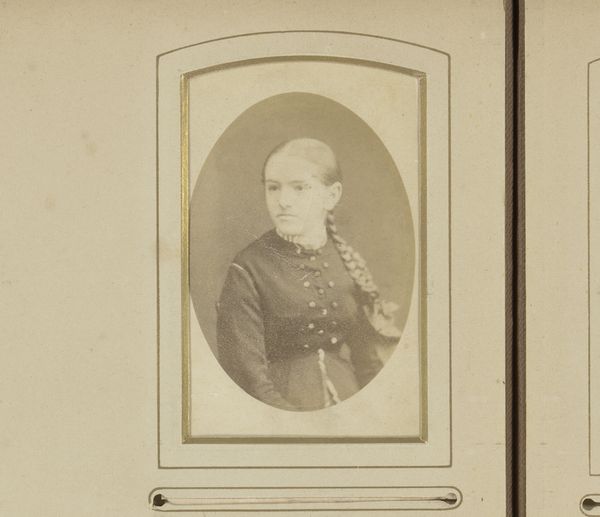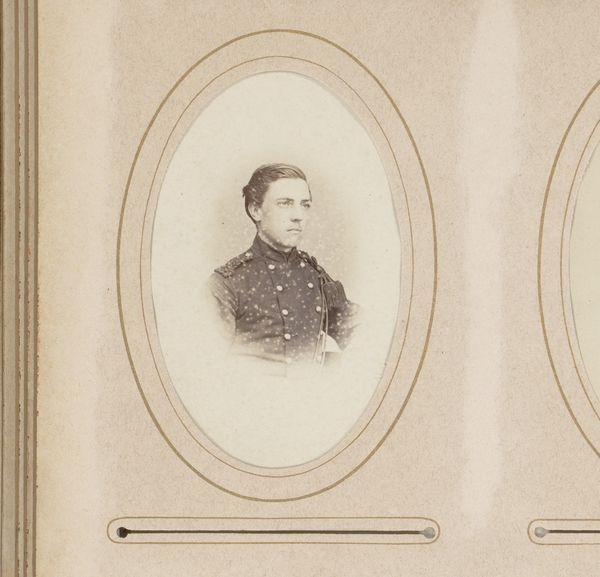
photography
#
portrait
#
photography
#
genre-painting
#
realism
Dimensions: height 105 mm, width 63 mm
Copyright: Rijks Museum: Open Domain
Curator: Let's consider this carte-de-visite, entitled "Portret van een man in uniform" or "Portrait of a man in uniform". It's an albumen print dating from the late 19th century, specifically 1867 to 1895, attributed to Kannemans & Zoon. Editor: It has this wistful aura, almost melancholy. The tight crop really focuses on his face. You get a sense of the man's… reserve, maybe? There’s a sense of formality juxtaposed with his almost boyish features. Curator: Yes, there is a clear tension between his youth and the uniform’s expectations of masculine authority. Given the timeframe, it’s impossible to ignore the shadow of conflict and conscription, the political dimensions looming behind such portraits, which are not always given full treatment when viewed today. How did he feel as labor in service to country? Editor: It makes you wonder about the actual production. We're looking at a photographic print, yes, but how many hands were involved? From the miners extracting the raw materials, to the chemists and photographers who produced the actual image and the uniform-makers; how did this piece operate as a physical and financial good? It speaks to the material culture of the era. Curator: Absolutely. And what did photographic portraiture represent for emergent middles classes? Was it a matter of personal archive or wider performativity and the solidification of the status quo of the empire? The pose, the costume, it all feeds into a very particular visual rhetoric—which might have also played into the social reinforcement of gender and class. Editor: And we mustn't ignore the role the uniform itself plays. That's a textile meant to evoke both protection and aggression. To be made from woven fabrics; dyed, cut, and sewn by countless workers. He becomes this product of a grand operation of man and material, reduced to only subject in an easy-to-reproduce photo image. Curator: That interplay between the individual and the collective, the personal and the political, is precisely what makes this unassuming portrait so resonant today. What we project onto him is so interesting because it might be what he too had hoped, feared, wanted, dreaded. Editor: Ultimately, examining this photograph is like uncovering a layered map of production and consumption in a very unique place in our human timeline. A reminder of both what has changed and, chillingly, remained consistent about labor's position under the weight of war.
Comments
No comments
Be the first to comment and join the conversation on the ultimate creative platform.
